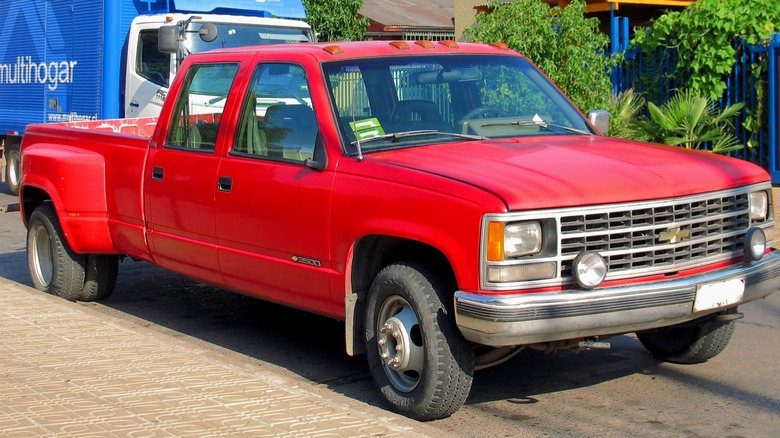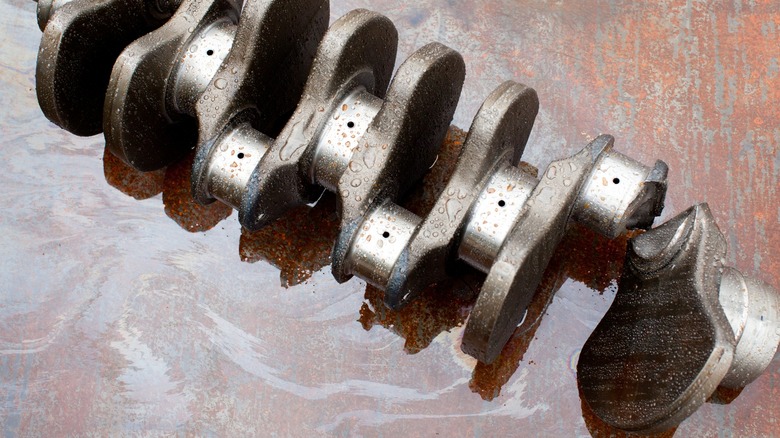The Best & Worst Years For GM-Detroit's 6.5L Diesel Turbocharged V8 Engine
You may know the history behind the Duramax diesel brand. However, you may not know that Detroit Diesel shares a similar story, as the company was originally known as the General Motors Diesel Division when it was founded in 1938. The GM Diesel Motors Division changed its name to Detroit Diesel and joined the Allison Division in 1965, stood alone in the 1980s, and became a subsidiary of Daimler Truck North America in 2000.
The GM/Detroit 6.5L was launched in 1992 for use in Chevrolet and GMC large SUVs, C/K 1500, 2500, and 3500 pickups, AM General Hummers, and the legendary military Humvee or HMMWV (High Mobility Multipurpose Wheeled Vehicle). GM/Detroit 6.5L engine applications for use in passenger vehicles ended in 2002, shortly after the Daimler acquisition. However, production continued for use in the HMMWV, with AM General eventually taking over 6.5L engine production under license from GM.
The 6.5L Detroit features 4.055-inch diameter cylinders with a 3.818-inch crankshaft stroke, displacing 395 cubic inches. Compression ratios range from 18.1:1 to 21.5:1 depending on its intended application. It was also available in either naturally aspirated or turbocharged models. Over the course of its production run, horsepower and torque ratings started at 180 hp and 360 lb-ft but increased to a maximum of 215 hp and 440 lb-ft of torque.
What are the best years for the GM/Detroit 6.5L diesel?
In a video review of the GM/Detroit 6.5L diesel, Jake from 8020 Media points out that the engine gets a bad rap (rightfully so) due to its low power output compared to the International 7.3L used by Ford and the 5.9L Cummins in Dodge pickups. However, the 6.5L was available in half-ton pickups, got decent gas mileage, and with some care could last over 300,000 miles.
GM/Detroit produced six variations of the engine, but the turbocharged L56 and L65 versions saw the most commercial use throughout its 10-year tenure. The 6.5L enjoyed its best years early on, with 1992 and 1993 models using the DB2 mechanical fuel injection pump. In 1994 the DB2 was replaced with the DS4 electronic injector pump that had a pump mounted driver (PMD), essentially an injection control module, mounted on the bottom. The location was subject to enough heat to melt the PDM's plastic casing, leading to failure.
In addition to being underpowered, the early 6.5L engines were prone to overheating issues caused by an inefficient cooling system and most prominent when towing a heavy trailer. GM/Detroit upgraded the cooling system in 1996, but the PMD failures remained.
[Featured image by RL GNZLZ via Wikimedia Commons | Cropped and scaled | CC BY-SA 2.0]
What years of the GM/Detroit 6.5L are best to avoid?
While the first two model years of the GM/Detroit 6.5L are the best the engine would ever be, and it did have some bright points like half-ton availability and fuel economy, it's best to avoid the 6.5L Detroit altogether if possible. If you find a 1992 or 1993 specimen, or relocate the PDM to keep it from melting, it's still likely to have overheating issues under a load. If that's not bad enough, the engine is prone to broken crankshafts, although some say replacing the harmonic balancer every 100,000 could help prevent that catastrophe.
Other options for the engine's demise include cracked engine blocks, either caused by a broken crankshaft or from poor casting quality or design near the outer main bearing bolt locations. If you need more reasons to run the other way when you find a 6.5L GM/Detroit under the hood, how about the vacuum-operated turbocharger wastegate system solenoid with 30-year-old rubber hoses? Even if the engine doesn't suffer catastrophic failure, and it has received proper care for all of its miles, the internals won't last much past 400,000 miles before excessive blow-by necessitates a rebuild.


